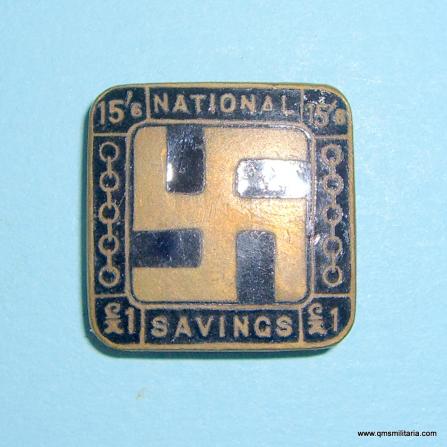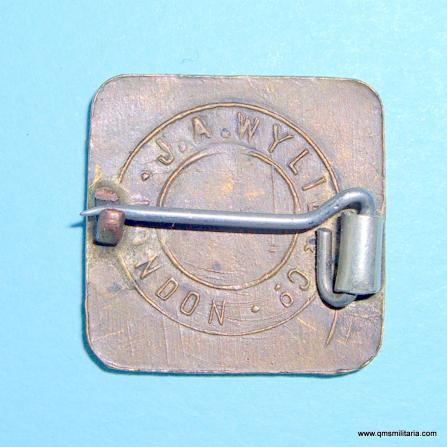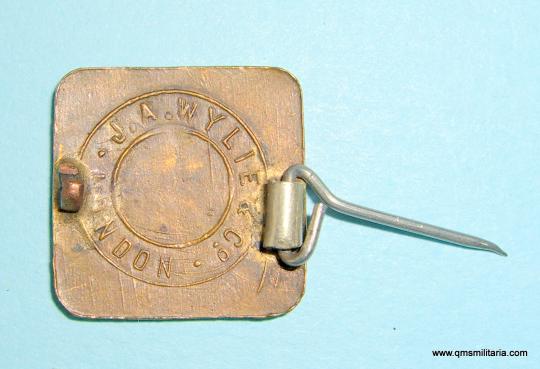Early British National Savings Black Enamel Pin Badge
A scarce 'National Savings 15'6 and £1" brass with inlaid black enamel badge bearing the Asian goodluck symbol of a crooked cross, the use of which was dropped in 1939 for obvious reasons. The reverse has the maker's details "J.A.Wylie & Co London". Good condition with no damage to the enamel and with its original pin fitting plus clasp, no damage to the enamel. Circa 20cm square.
The swastika (&21328;) is an equilateral cross with four arms bent at 90 degrees. The earliest archaeological evidence of swastika-shaped ornaments dates back to the Indus Valley Civilization as well as the Mediterranean Classical Antiquity and paleolithic Europe. Swastikas have also been used in various other ancient civilizations around the world including Turkic, India, Iran, Nepal, China, Japan, Korea and Europe. It remains widely used in Indian religions, specifically in Hinduism, Buddhism, and Jainism, primarily as a tantric symbol to evoke shakti or the sacred symbol of auspiciousness. The word "swastika" comes from the Sanskrit svastika - "su" (meaning "good" or "auspicious") combined with "asti" (meaning "it is"), along with the diminutive suffix "ka." The swastika literally means "it is good."
In modern times, following a brief surge of popularity as a good luck symbol in Western European culture, a swastika was adopted as a symbol of the Nazi Party of Germany in 1920, who used the swastika as a symbol of the Aryan race. After Adolf Hitler came to power in 1933, a right-facing 45° rotated swastika was incorporated into the flag of the Nazi Party, which was made the state flag of Germany during the Nazi era. Hence, the swastika has become strongly associated with Nazism and related concepts such as antisemitism, hatred, violence, death, and murder in many western countries, and is now largely stigmatized there due to the changed connotations of the symbol. Hence the adoption of St George killing the dragon on subsequent designs used by National Savings.
Code: 52231



